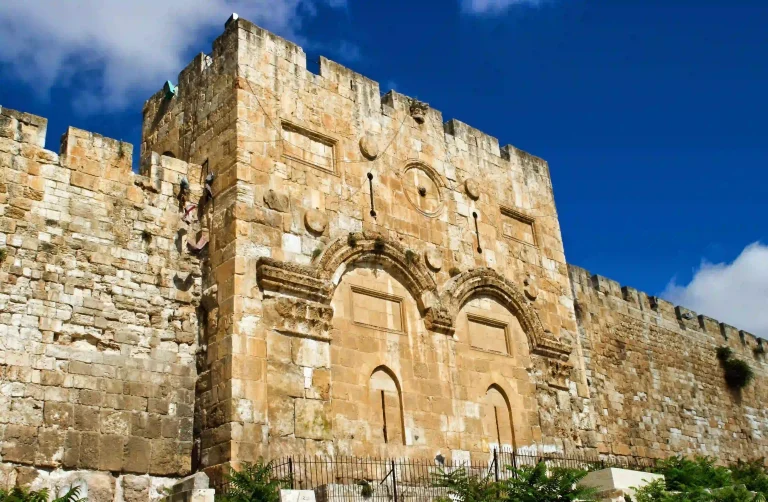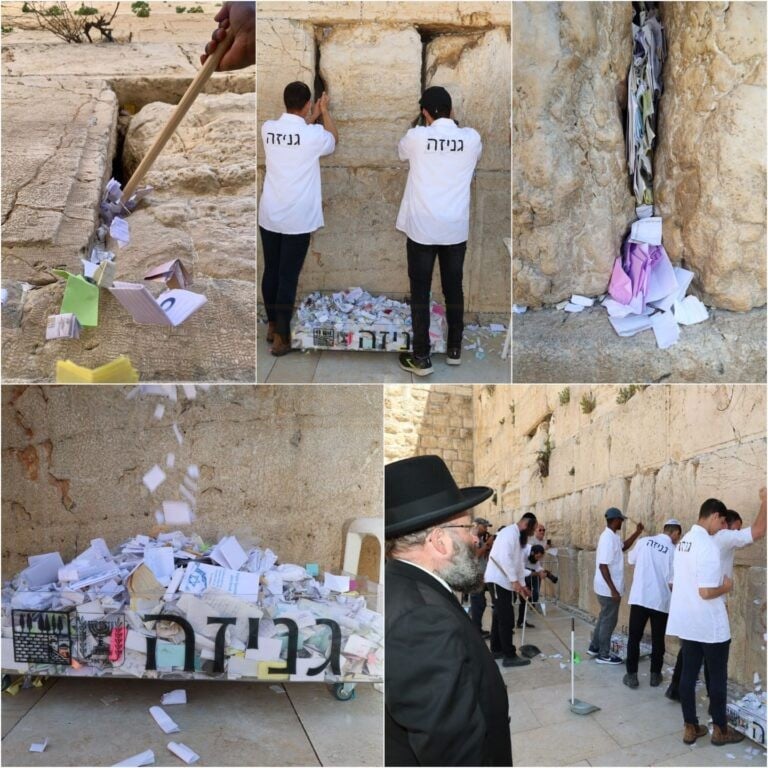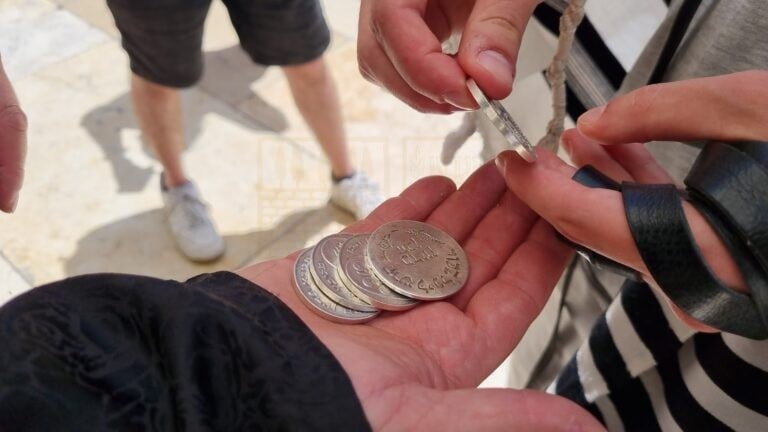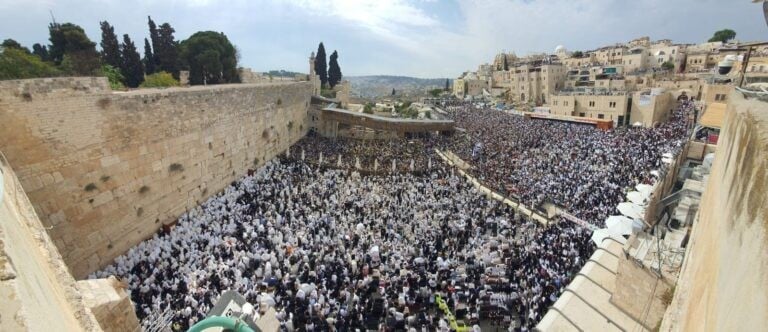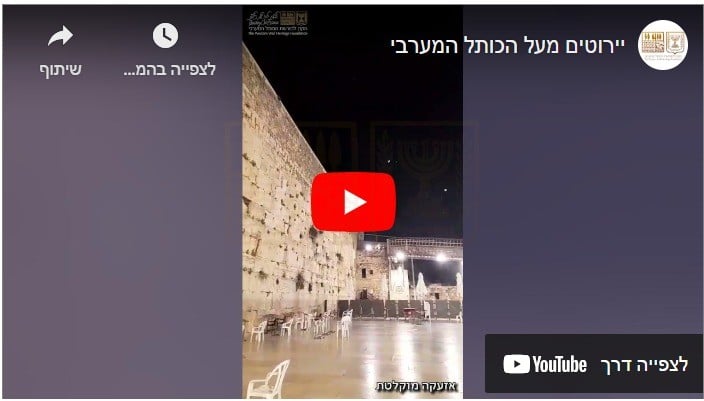Shelach 5781
Rabbi Shmuel Rabinowitz, Rabbi of the Western Wall and Holy Sites
This week we will be reading Parashat Shelach, a Torah portion that begins with the description of one of the most difficult events in Jewish history during its time in the desert. The nation stood on the threshold of the land of Canaan, the land that will later be called the Land of Israel, and sent spies to check out the military situation in the land, and the option for conquering it. The spies return and adamantly announce that conquering the land is impossible and that it is “a land that consumes its inhabitants” (Numbers 13, 32). The children of Israel, no longer interested in conquering the land, turn to Moses and Aaron in hysterics:
“If only we had died in the land of Egypt, or if only we had died in this desert! Why does the Lord bring us to this land to fall by the sword; our wives and children will be as spoils. Is it not better for us to return to Egypt?”
(Numbers 14, 2-3)
This complaint expresses their loss of faith in the G-d Who took them out of Egypt, provided them with sustenance in the desert, gave them the Torah in the Divine revelation, and promised them to bring them to the Promised Land. As a punishment for this sin, that entire generation did not merit to see the land. The nation continued to wander in the desert for thirty-eight more years until the last of those who had left Egypt had passed, and the next generation entered the Land of Israel.
Parashat Shelach ends with the commandment of “tzitzit.” According to tradition, tzitzit is composed of intertwined threads that are tied on clothes that have four corners. The Torah adds that some of these threads should be dyed the color of “techelet,” azure. The color techelet is to be produced from a specific snail. In the ancient world, techelet was knows as a royal and valuable dye, and its production was mostly on the shores of the Middle East. Beginning about 1,500 years ago, the production of techelet diminished until ultimately the method of production was lost. Jews stopped tying techelet threads on their clothes and sufficed with undyed tzitzit. There are researchers who identify techelet with the dye produced from the shell of the hexaplex trunculus and produce techelet for tzitzit from these snails today.
We read about the purpose of the commandment of tzitzit and techelet in the parasha:
This shall be fringes for you, and when you see it, you will remember all the commandments of the Lord to perform them, and you shall not wander after your hearts and after your eyes after which you are going astray. So that you shall remember and perform all My commandments and you shall be holy to your G-d.
(Numbers 15, 39-40)
The tzitzit is meant to prevent us from being swept away by our hearts and eyes, from following impulsive desires, by reminding us of G-d’s presence in the world, and of the values of morality embedded in His commandments. From the verses of the Torah, it seems that the thread dyed techelet is what is supposed to remind us of G-d’s presence. How and why? We read about this in the Talmud.
“Why is techelet different from all other colors? Because techelet is similar to the sea, and the sea is similar to the sky, and the sky is similar to the Throne of Glory…, as it is stated ‘The likeness of a throne, as the appearance of a sapphire stone’ (Ezekiel 1, 26).
(Menachot 43b)
According to Ezekiel’s prophecy, G-d’s Throne of Glory looks like a sapphire stone, a beautiful stone the color of azure, techelet. Reading this superficially, we understand that the techelet is meant to remind man of G-d’s presence by resembling the color of G-d’s throne in Ezekiel’s prophecy.
In a more careful readying, we see additional layers. Techelet resembles the sea and the sky… and only after that G-d’s throne. According to Nachmanides (Rabbi Moses ben Nachman, of the great sages of Spain in the 13th century), the color of techelet hints at the never-ending, infinite nature of the sea and the heavens.
Techelet, therefore, is meant to remind us of the beauty of creation, its infinite nature, and through it – the presence of G-d. According to Ezekiel’s prophecy, even His throne was the infinite color of techelet. When a person looks at nature, at a green valley, at the depths of the skies, he is able to see past the immediacy of what stands before him, past the impulsive desires of his heart, and remember his place in the context of creation and in relation to its Creator.
Our parasha begins with the sin of the spies and ends with the commandment of tzitzit. The spies were swept away by what they saw and the instinctive fears that stemmed from it. Tzitzit comes to help us see beyond immediacy, to look at the big picture and remember G-d’s presence in each and every detail in our world.

